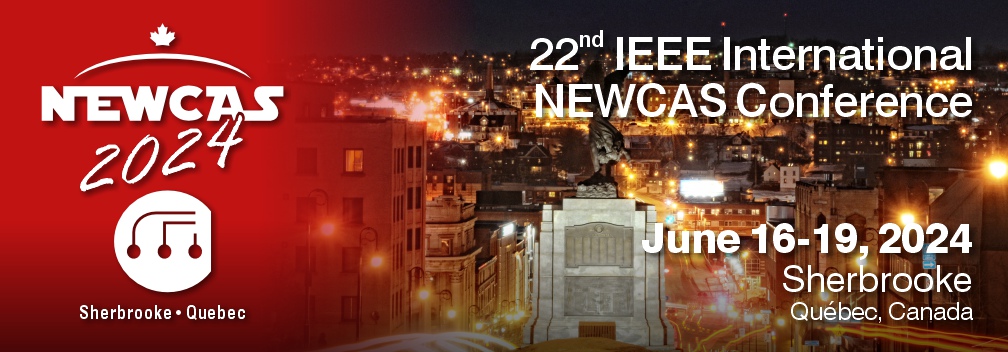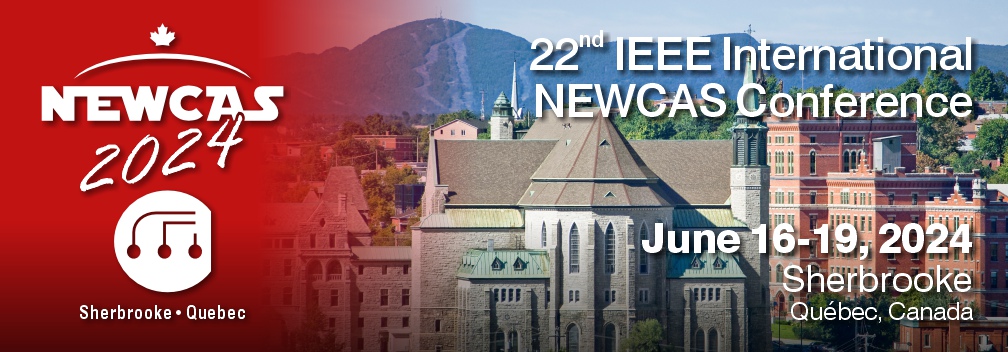for Lectures
On this page:
1. General consideration
2. Option 1: Recording with PowerPoint
3. Option 2: Recording with Zoom
4. Option 3: Recording with OBS
5. Gidelines
6. Duration
7. Encoding Setting
8. Tips for Recording
9. Slide template
1. General Considerations
Irrespective of which format is selected, whether live on-site or on-line via zoom, a pre-recorded video of each oral presentation will be prepared by all authors (irrespective of whether participation is in-person or virtual), and these will be available to those participants who cannot attend NEWCAS in person due to COVID-19. These recordings will be available to all participants on demand from the time when the presentation is scheduled in the technical program up until 30 days after the conference is concluded. All authors (in-person and virtual) should be prepared for a live presentation with a Q&A session immediately following their scheduled presentations. The pre-recorded video presentation must be a file in MP4 format (see details below) and should be prepared using voice-over PowerPoint slides and will be used in case of technical issues. If desired, presenters can provide a brief introduction with a webcam at the start of the presentation and/or a thumbnail overlay of the presenter on the slides. Creating a video file in .mp4 format over a PowerPoint slide presentation, three options follow.
2. Option 1: Instructions for recording presentations with PowerPoint “Record Slide”:
PowerPoint offers a convenient Record Slide Show option whereby audio can be recorded individually on each slide and then the entire slide show can be converted to a video file in .mp4 format. This provides a convenient mechanism for precisely monitoring the time allocated to each slide and editing audio on a slide-by-slide basis to precisely control the length of the entire presentation. To use this function, select Recording on the main menu ribbon in PowerPoint, then select the Record Slide Show function to enable audio recording. After the recording is complete, File/Export/Create a Video can be used to generate a .mp4 file.
3. Option 2: Instructions for recording presentations with Zoom:
Zoom also provides a good platform for recording audio over slides. Adjusting the total length of the presentation may be a bit more involved than using Option 1 if the initial recording is somewhat too long or somewhat too short. See the tutorial here.
4. Option 3: Instructions for recording presentations with OBS:
A free software package, OBS (download here), also allows users to capture simultaneously the presenter while speaking with slides. Instructions for using OBS can be found on YouTube.
For videos to be verified by the technical program committee, there is considerable urgency in preparing and uploading the video. Accordingly, we ask that you please finalize your video no later than May 9. This is a HARD DEADLINE. Presentations will not be accepted after this date.
5. Guidelines for preparing your video:
Please use the following guidelines for preparing your video. Final specifications will be checked at the time of submission and file not compliant may not be uploaded.
6. Duration:
Lecture video: 12 minutes maximum, 11 minutes minimum. (Any file over 12 minutes long will be automatically truncated at 12 minutes). The total time allocated to each presentation is 15 minutes. The first 12 minutes will be for a formal presentation and the remaining 3 minutes will be used for Q/A following the presentation.
7. Recommended Encoding Settings:
- Format: MP4
- Compression: H.264 (AAC for Audio)
- Resolution: Minimum height of 480 pixels
- Aspect Ratio: 16:9
- Frame Rate: Content should be encoded and uploaded in the same frame rate it was recorded. Common frame rates include: 24, 25, 30, 48, 50, 60 fps
- Bitrate: Variable
- File Size: 12 minutes maximum, 11:30 minimum: file size must be 500 MB or less
- File Naming Convention: Paper 4-digit ID#.mp4″
Please note the final specifications will be checked at the time of submission and files not compliant may not be uploaded.
8. Tips for Recording:
- Use as quiet an area as possible
- Avoid areas that have an echo
- Rooms should be fairly small
- Sound dampening with carpeting, curtains, furniture
- Hardline internet connection recommended, but if unavailable, a strong Wi-Fi connection
- Good headset with a microphone close to mouth BUT away from the direct line of mouth to reduce “pops”. Avoid using the default built-in microphone on the computer.
Suggestion: Do a test recording of a couple of minutes and review the sound and picture quality, MP4 format, and bitrate before recording the entire presentation. Make adjustments if needed.



